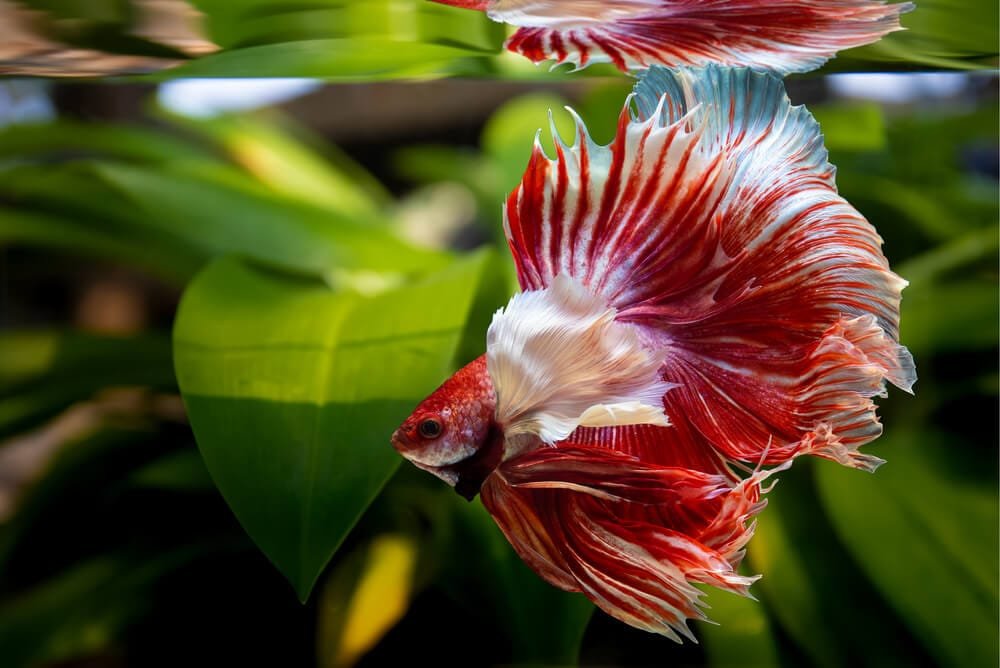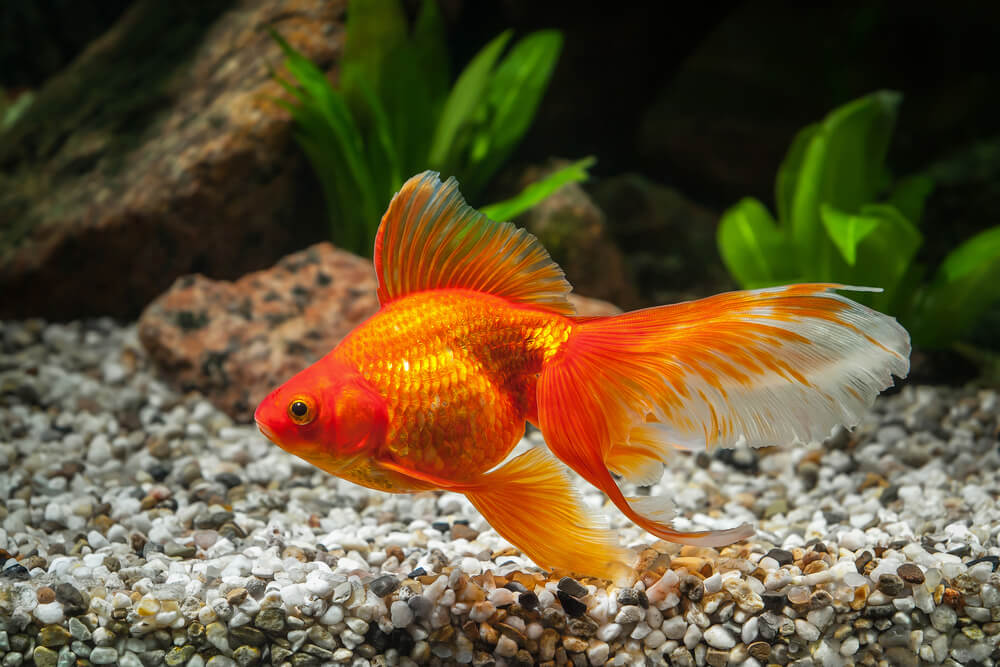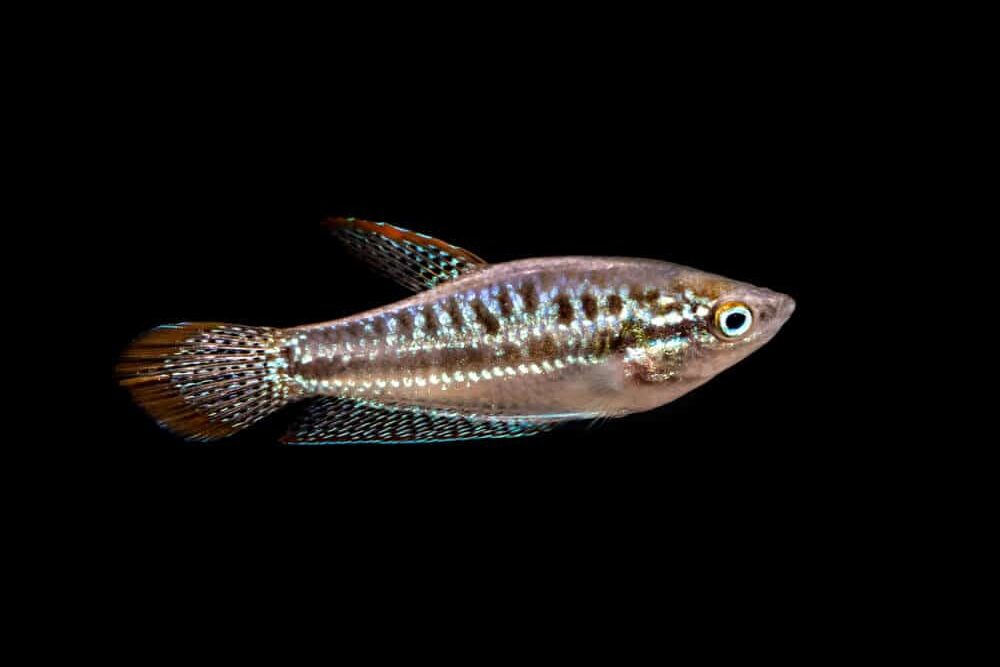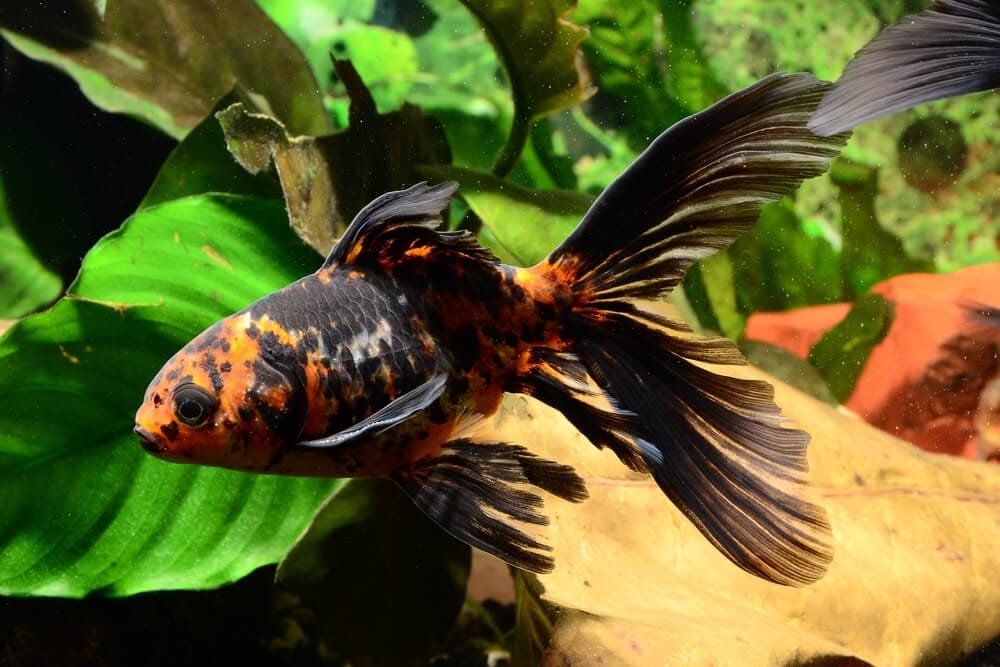Bubble Eye Goldfish 101: Care, Feeding and Ideal Tank Conditions
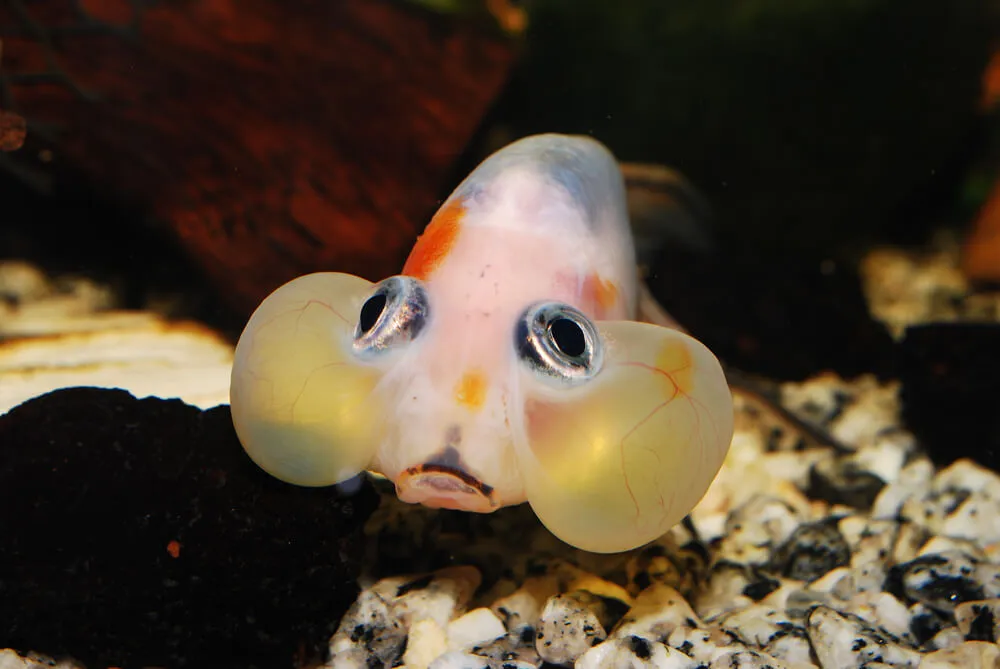
If you’re in search of an enchanting aquatic companion, look no further than the captivating Bubble Eye Goldfish. With its distinct appearance and unique features, this extraordinary fish is sure to capture your heart. With bulging, fluid-filled sacs under its eyes, these goldfish exhibit a one-of-a-kind look that sets them apart from the rest. Known for their gentle demeanor and vibrant colors, it brings an air of elegance and serenity to any aquarium. Let’s explore the world of this fascinating fish and discover why they make the perfect addition to your underwater oasis.
Physical Description
Body Shape
The Bubble Eye Goldfish is known for its unique body shape. Its body is rounded and compact, with a slightly flattened belly. The most distinctive feature is the presence of large, fluid-filled sacs under its eyes, known as the bubble sacs. These sacs give the fish its name and contribute to its adorable and playful appearance.
Size
On average, Bubble Eye Goldfish grow to be around 6 to 8 inches long, making them a relatively small-sized goldfish species. However, their bubble sacs may add some extra visual bulk to their overall appearance.
Coloration
Bubble Eye Goldfish come in a variety of vibrant colors. They can be found in shades of orange, red, yellow, white, and even calico patterns. Their shimmering scales and contrasting colors make them a captivating addition to any aquarium.
Distinctive Features
Bubble Sac
One of the most striking features of the Bubble Eye Goldfish is its bubble sacs. These fluid-filled sacs develop and grow as the fish matures. The size and shape of these sacs can vary from fish to fish, making each one of this fish unique. These sacs are delicate and require special attention, as they can easily be punctured or damaged by sharp objects in the aquarium.
No Dorsal Fin
Unlike many other goldfish varieties, Bubble Eye Goldfish do not have a dorsal fin. This absence of a dorsal fin gives them a sleek and streamlined appearance, further accentuating their rounded body shape.
Protruding Eyes
Another distinctive feature of this Goldfish is its large, protruding eyes. These eyes are located on the sides of its head and are set at an upward angle. Combined with the bubble sacs, these eyes give the fish a whimsical and adorable look that captures the hearts of fish enthusiasts worldwide.
Origins and History
Ancient Chinese Origins
The Bubble Eye Goldfish is believed to have originated in China during the Tang Dynasty (618-907 AD). It was during this time that the practice of selective breeding was initiated to develop unique goldfish varieties. It is thought to have been selectively bred from a common goldfish ancestor, with a specific focus on developing the bubble sacs under the eyes.
Introduction to the West
Bubble Eye Goldfish made their way to the Western world in the late 19th century, when they were imported from China. The captivating appearance of these fish quickly gained popularity among fish enthusiasts, leading to their widespread adoption as pets and ornamental fish. Since then, they have become a favorite among both experienced and novice fish keepers.
Breeding and Varieties
Over the years, this fish specie has been further developed through selective breeding to create different color variations and patterns. Today, there are various color variations available, including red, orange, yellow, white, and even black. These different varieties add to the excitement of owning a Bubble Eye Goldfish and allow fish keepers to choose a fish that suits their preferences.
Habitat and Care
Aquarium Setup
When setting up an aquarium for Bubble Eye Goldfish, it’s important to create an environment that meets their specific needs. A spacious tank with a minimum capacity of 20 gallons is recommended, as these fish need ample space to swim and explore. It’s crucial to provide plenty of hiding spots and soft plants, as they can be sensitive to rough or sharp objects due to their delicate bubble sacs.
Water Quality
Bubble Eye Goldfish thrive best in well-filtered water with a pH level between 7 and 8. They prefer a water temperature between 68 and 74 degrees Fahrenheit (20 to 23 degrees Celsius). Regular water changes are essential to maintain optimal water quality and provide a healthy environment for these fish.
Feeding
Proper nutrition is crucial for the health and well-being of Bubble Eye Goldfish. Their diet should consist of a balanced mix of high-quality goldfish pellets, flakes, and occasional treats like freeze-dried or live brine shrimp, bloodworms, and daphnia. It’s important to feed them small amounts several times a day, as overfeeding can lead to health issues.
Tank Mates
When selecting tank mates for Bubble Eye Goldfish, it’s important to consider their delicate bubble sacs and slow swimming style. It’s best to keep them with other peaceful and slow-moving fish species, such as other goldfish varieties (like Ryukins or Orandas) or Danios. Avoid aggressive or nippy fish, as they may harm the bubble sacs or harass the this goldfish.
Health and Disease
Common Health Issues
Bubble Eye Goldfish are generally hardy fish, but they are prone to certain health issues. One common problem is eye sac rupture, which can occur if the fish’s bubble sacs are damaged. They may also develop swim bladder disorders, which can cause buoyancy problems and difficulty in maintaining control of their movement. Additionally, poor water quality can result in fin rot, fungal infections, or other bacterial diseases.
Prevention and Treatment
To keep Bubble Eye Goldfish healthy, it’s crucial to maintain excellent water quality in the aquarium. Regular water testing, filtration, and appropriate water changes are essential. Providing a well-balanced diet and avoiding overfeeding can also help prevent swim bladder disorders. If any health issues arise, it is recommended to consult with a knowledgeable fish veterinarian who can provide the appropriate treatment and care.
Breeding Bubble Eye Goldfish
Selective Breeding
Breeding Bubble Eye Goldfish can be a rewarding but challenging endeavor. Selective breeding is essential to maintain and enhance the unique physical characteristics of these fish, such as the bubble sacs and coloration. Breeders carefully choose suitable mating pairs and provide them with optimal breeding conditions to increase the chances of producing healthy fry with desirable traits.
Spawning Process
Bubble Eye Goldfish have the potential to spawn naturally in a well-maintained and appropriately sized aquarium. Males will chase females and nudge their bellies to induce spawning. The female will then lay hundreds of eggs on plants or other surfaces, which the male will fertilize. It’s crucial to remove the eggs to a separate breeding tank to protect them from being eaten by the adult fish.
Caring for Fry
Once the eggs hatch, the fry will need special care to ensure their survival. They are delicate and vulnerable, requiring a separate and well-maintained environment with suitable food and water parameters. Feeding them with finely crushed or powdered fry food and performing regular water changes are vital for their growth and development. As they mature, careful selection and culling may be necessary to maintain the desired traits.
Popularity and Recognition
Competitions and Shows
Bubble Eye Goldfish have gained popularity not only as pets but also as show fish. Many fishkeeping associations and clubs hold competitions and shows where Bubble Eye Goldfish enthusiasts can showcase their prized fish. These events not only provide a platform for breeders to showcase their hard work but also allow enthusiasts to appreciate and learn more about these unique fish.
Bubble Eye Goldfish in Art and Culture
The captivating appearance of Bubble Eye Goldfish has made them a beloved subject in various forms of art and culture. From paintings and sculptures to literature and even in movies, these fish have become an iconic symbol of beauty and grace. Their whimsical appearance and gentle nature have inspired artists and storytellers to include them in their creative works, further solidifying their place in popular culture.
Myths and Misconceptions
Goldfish Memory
Contrary to popular belief, goldfish, including Bubble Eye Goldfish, have a good memory. They are capable of recognizing their owners, learn to associate them with food, and even perform simple tricks with proper training and conditioning. With patience and consistent positive reinforcement, this fish can display remarkable intelligence and memory.
Compatibility with Other Species
Another misconception about Bubble Eye Goldfish is that they are not compatible with other fish species. While their delicate bubble sacs require cautious handling, they can coexist peacefully with suitable tank mates. By selecting slow-moving and peaceful fish species, providing ample hiding spots, and maintaining appropriate water conditions, Bubble Eye can live harmoniously in a community aquarium.
Conclusion
Bubble Eye Goldfish are a visually captivating and delightful addition to any aquarium. Their unique body shape, vibrant colors, and distinctive features, such as the bubble sacs and protruding eyes, make them stand out among other goldfish varieties. With proper care, they can thrive and bring joy to fish enthusiasts for many years. By understanding their origins, specific care requirements, and debunking myths and misconceptions, fish enthusiasts can create a suitable environment for Bubble Eye Goldfish and provide them with the love and care they deserve.
